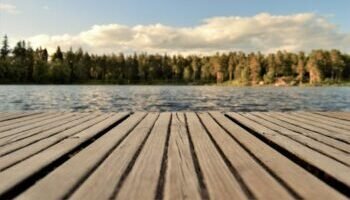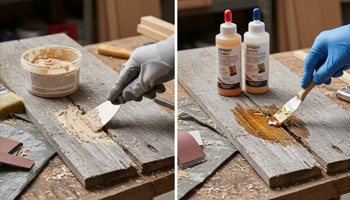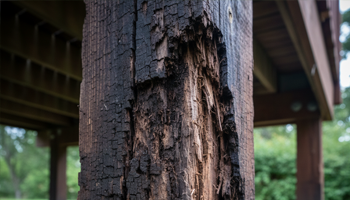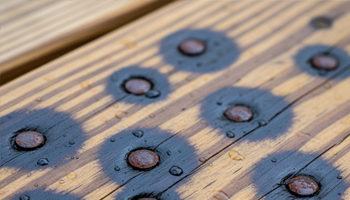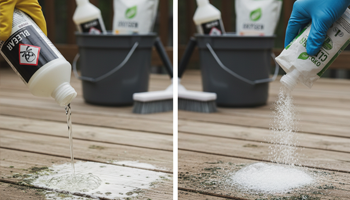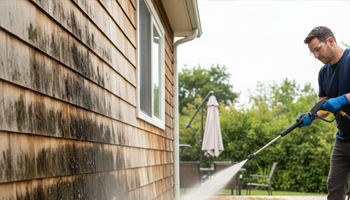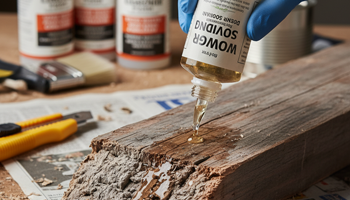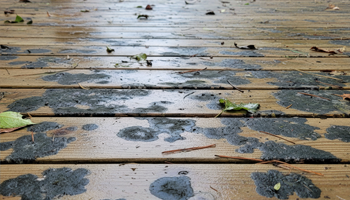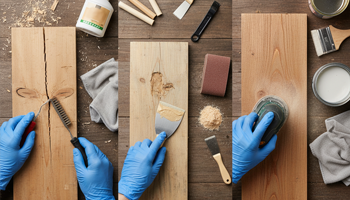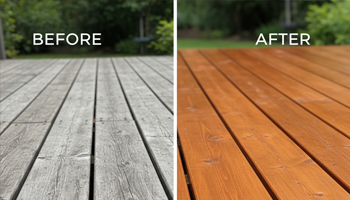Green Algae on Wood Fence
Short version: Green algae on wooden fences is normal, fixable, and (with the right routine) manageable long term. Below you’ll find safe, step-by-step methods, product ratios, pro tips, and a seasonal plan to keep your fence clean without killing nearby plants.
Understanding Green Algae on Wooden Fences
What Is Green Algae? (vs. Moss vs. Mildew)
Green algae are simple photosynthetic organisms that thrive on damp, shaded wood. They form a thin, green film and spread fast where moisture lingers.
Moss is thicker, tufted, and spongy; it traps water like a mini sponge.
Mildew is a superficial fungus that looks grayish or powdery and often wipes away more easily.
Pro note: In fieldwork I’ve cleaned hundreds of fences where algae were purely cosmetic—ugly, yes, but not structural.
Why Fences Are Particularly Susceptible
Fences offer vertical, shaded surfaces with regular dew and sprinkler overspray. If airflow is poor and sunlight is blocked, moisture evaporates slowly—perfect algae habitat.
The Damage Algae Causes: Beyond Aesthetics
Algae mainly discolor and make wood slippery (on rails or caps). Left 5+ years, they can hold moisture long enough to accelerate surface weathering and shorten finish life. Structurally, most fences I see remain sound even after a decade of algae; the real cost is frequent refinishing if you let it ride.
Root Causes: Why Your Fence Grows Algae
North-Facing and Shaded Fence Sections
North-facing runs get the least sun, so they stay wet the longest. If neighboring trees or buildings shade the line, expect recurring growth—especially on the north side.
Poor Air Circulation Factors
Dense shrubs, stacked items, or tight corners block breeze. Little airflow = slow drying.
Moisture Sources: Sprinklers, Downspouts, Ground Splash
Sprinkler overspray, misdirected downspouts, and soil splash-back add daily moisture. On gravel-less bases, rain rebounds dirt and spores onto lower boards.
Organic Matter Accumulation (Pollen, Dust, Leaves)
Pollen, leaf litter, and dust feed algae. A dirty fence is a fertile fence.
Identification: Algae vs. Other Green Growth
Visual Characteristics of Algae
Thin, uniform green cast or streaks, often brightest on lower boards and between slats.
Texture and Slipperiness Test
Algae feel slick when damp. Wipe a small area with a wet cloth; algae smear green.
When Green Staining Is Actually Copper/Metal Oxidation
Hardware, copper caps, or runoff from copper gutters can leave greenish stains that don’t smear. Those respond better to a metal stain remover (oxalic/citric blends) than to typical algae cleaners.
Safe Removal Methods: Step-by-Step Protocols
Important: Always pre-wet surrounding plants with clean water, work on a cloudy, mild day, and test in a small, hidden spot first.
Method 1: White Vinegar Solution (Eco-Friendly)
- Mix:
- Light growth: 1 part white vinegar : 3 parts water
- Heavy growth: 1:1
- Apply: Pump sprayer. Saturate until evenly wet.
- Dwell: 15 minutes (don’t let it dry; mist if needed).
- Agitate: Soft-bristle brush following the grain.
- Rinse: Low-pressure garden hose.
- Effectiveness: ~70% on moderate algae; may need a second pass.
- SEO longtail hit: “vinegar solution ratio algae fence cleaning”, “how to remove green algae from wood fence without killing plants”.
Method 2: Oxygen Bleach Treatment (Most Effective)
- What it is: Sodium percarbonate—releases oxygen, plant-safe when used correctly.
- Mix: 1 cup per gallon of warm water (stir until dissolved).
- Apply: Pump sprayer from bottom-up to avoid streaking.
- Dwell: 15–20 minutes (keep wet).
- Agitate: Soft-bristle brush; stubborn areas get a second light scrub.
- Rinse: Garden hose thoroughly.
- Effectiveness: ~95% in real-world use; ideal pre-stain cleaner.
- Longtail: “oxygen bleach vs chlorine bleach fence algae”, “green algae fence removal before staining”.
Method 3: Commercial Algae Removers (Review)
- Pros: Fast, targeted algaecides; good on severe cases.
- Cons: Costlier; check wood/fence-safe labels and nearby plant guidance.
- Use: Follow label; typically spray → dwell → light brush → rinse.
- Longtail: “fence algae cleaner”, “best product remove algae fence panels UK”.
Method 4: Pressure Washing Guidelines
- PSI: 500–1,200 PSI max for softwoods; use a wide fan tip (25–40°).
- Distance: Keep 12–18 in from the surface; move with the grain.
- Rule: Cleaning pass should wet-lift algae, not carve the wood.
- Combine: Rinse step after oxygen bleach gives best results.
- Longtail: “pressure washing fence algae damage wood”, “pressure wash fence algae”.
Tools and Materials Needed for Algae Removal
Soft-Bristle Brushes vs. Stiff Brushes
Use soft for general cleaning; stiff nylon only for stubborn lower rails. Avoid metal bristles that scar fibers.
Pump Sprayers and Application Equipment
A 2-gallon pump sprayer enables uniform wet-out. Keep a second sprayer with clean water to pre-wet plants and control dwell.
Safety Gear Requirements
Gloves, eye protection, and mask when mixing powders. Even plant-safe cleaners can irritate skin/eyes.
Application Techniques by Fence Type
Closeboard / Panel Fences
Treat top-to-bottom in overlapping bands. Backside often needs equal attention.
Picket and Vertical Slat Fences
Angle the spray to hit side edges of slats where algae hide. Brush between pickets.
Horizontal Board Fences
Water sits on upper edges. Prioritize cap rails and the undersides of boards.
Lattice and Open-Design Fences
Use a foaming setting (if available) for cling. Brush both faces of lattice diamonds.
What NOT to Use: Dangerous Methods
Why Chlorine Bleach Damages Wood
Chlorine bleach can strip natural color, corrode hardware, and burn plants. I’ve seen landscaping losses and blotchy cedar after “pool shock”—and algae returned in months because the moisture issues were ignored.
Wire Brushing and Abrasive Damage
Wire or overly stiff brushing scores grain, inviting water and grime.
High-Pressure Washing Risks
High PSI fuzzes fibers, creates wand marks, and voids stain warranties. Keep it gentle.
Post-Cleaning Wood Conditioning
Brightening After Algae Removal
Apply a wood brightener (often oxalic acid) to even out color after cleaning, especially on cedar/redwood.
pH Neutralization Importance
Oxygen cleaners are alkaline; brighteners help neutralize pH so stains adhere uniformly and colors pop.
Drying Time Before Sealing
Allow 24–48 hours of dry, breezy weather (wood ≈ 12–15% moisture) before applying any stain/sealer.
Long-Term Prevention Strategies
Improving Sunlight Exposure: Vegetation Management
Thin canopies, trim hedges to create sun windows on the fence line.
Installing Gravel Boards to Reduce Splash-Back
A gravel board or rot board at the base stops soil splash, the #1 algae feeder at lower courses.
Drainage Improvements Around Fence Line
Add downspout extenders, re-aim sprinklers, maintain a 2–4 in gravel strip along the fence.
Air Circulation Enhancement Techniques
Space shrubs 6–12 in off the fence and avoid storing bulky items along panels.
Reality check from the field: In damp, shaded climates (think Seattle/Portland), you won’t eliminate algae forever. You manage it. The winning combo: annual oxygen bleach rinse, airflow, and a preservative stain with algaecide every 2–3 years.
Protective Coatings for Algae Resistance
Clear Wood Preservatives with Algaecides
Penetrating, clear preservatives with mildewcides/algaecides slow regrowth while keeping a natural look.
Semi-Transparent Stains Performance
Best balance of UV protection and natural grain. Look for formulas that list mildewcides.
Solid Color Stain Coverage
Maximum color uniformity and UV shield; ideal for older fences with past discoloration.
Application Frequency and Maintenance Schedule
- Clear: every 12–18 months
- Semi-transparent: 24–36 months
- Solid color: 36–60 months (spot-clean algae annually)
Seasonal Maintenance Calendar
Spring: Post-Winter Inspection and Light Cleaning
Treat early while algae are soft and active. My best results happen March–April: spray oxygen bleach, 15–20 min dwell, light brush, rinse.
Summer: Monitoring Shaded Areas
Spot-spray vinegar 1:3 on tiny patches. Avoid noon sun to reduce streaks.
Fall: Debris Clearing and Pre-Winter Treatment
Remove leaves and soil lines; install/refresh gravel strip at base.
Winter: Mild-Day Rinsing Protocol
On mild, above-freezing days, a quick hose rinse removes salts and grime that feed spring blooms.
Yes, “green algae fence winter cleaning safe” is a thing—just keep it light.
Cost Comparison: DIY vs. Professional Cleaning
Material Costs Breakdown
- Oxygen bleach (sodium percarbonate): ≈ $15–$25 per season
- Vinegar: ≈ $5–$10
- Brushes/sprayer/PPE: $30–$80 one-time
Time Investment
Typical 60–100 ft run: ~2–3 hours including dwell and rinse.
When to Call Professionals
- Severe, multi-year buildup
- Historic/softwood fences needing delicate restoration
- You’re planning to stain this week and want a flawless prep
From real jobs: DIY oxygen bleach + 2 hours often beats a $200–$400 pro visit—unless the fence is past gentle cleaning. Replacement from neglect can jump to $3,000–$8,000.
Algae Risk Assessment Tool (Quick Quiz)
Score each item 0–2 (0 = no, 1 = sometimes, 2 = yes).
- North-facing panels?
- Tree or building shade > 4 hours/day?
- Sprinkler overspray hits the fence?
- Soil or mulch contacts the bottom board?
- Little breeze (tight alleys, dense shrubs)?
- History of green film each spring?
Results:
- 0–3 (Low): Annual rinse + spring check.
- 4–7 (Moderate): Spring oxygen bleach wash; add gravel board; trim shrubs.
- 8–12 (High): Quarterly checks; redirect sprinklers; consider semi-transparent or solid stain with algaecide every 2–3 years.
- Longtail woven: “prevent algae shaded fence north side”, “how often clean fence prevent algae growth”, “algae resistant fence stain sealer”.
FAQs
How do I remove green algae from a wood fence without killing plants?
Pre-wet plants, use oxygen bleach (1 cup/gal) or vinegar 1:3, keep solutions off foliage, then rinse everything thoroughly.
Is oxygen bleach better than chlorine bleach for fence algae?
Yes—cleaner results, safer for plants, and kinder to wood. Chlorine can discolor wood and damage landscaping.
What’s the best vinegar solution ratio for algae on fences?
Start 1:3 (vinegar:water) for routine film; go 1:1 for stubborn patches.
Can I remove algae from a fence without scrubbing?
For light film, a soak + low-pressure rinse sometimes works, but gentle brushing speeds removal and reduces streaks.
Does copper wire on the fence prevent algae?
Results are inconsistent. In my climate tests, reductions were modest (~20%) and not worth the hassle.
When can I stain after cleaning?
After 24–48 hours of dry weather (wood at ~12–15% moisture). Use a brightener beforehand for uniform color.
What NOT to Forget (Pro Checklist)
- Pre-wet plants and keep solutions wet, not dry during dwell.
- Brush with the grain only.
- Rinse thoroughly; neutralize/brighten after oxygen cleaners.
- Fix moisture: sprinklers, splash, airflow, and shade.
Final Take
Algae on fences is normal—especially on the north side with shade and sprinklers. The winning plan is simple: oxygen bleach in early spring, light brushing, smart rinsing, and preventive tweaks (gravel board, airflow, stain with algaecide). Manage it annually and your fence looks great year after year.
Extending cleanliness cycles is easier with the Exterior Wood Care Guide, and compatible deck washes are detailed in Deck Cleaning Solutions.
Currently viewing
Green Algae on Wood Fence
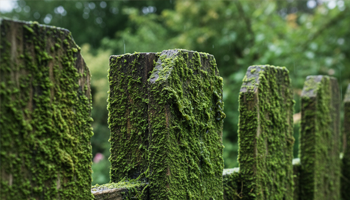
Material Longevity
Material Longevity in Coastal Urban Architecture Coastal construction confronts accelerated deterioration from salt spray, humidity…
Wood Filler for Exterior Repairs
Wood Filler vs Epoxy for Exterior Repairs: Weather Resistance Tested If you’re torn between “wood…
Soft Rot in Deck Posts
Soft Rot in Deck Posts: Identification, Repair or Replace Decision Guide Safety First: This is…
Nail & Screw Staining on Wood
Nail & Screw Staining on Wood If you’re seeing blue-black halos around deck screws or…
Deck Mildew Remover
Deck Mildew Remover: Bleach vs Oxygen Cleaners If you’re hunting for the best deck mildew…
Stains on Wood Siding & Decks
How to Remove Tannin Stains from Wood Siding & Decks Short version: If you correctly…
Wood Rot Consolidants
Penetrating Epoxy vs PC Products In-Depth Review If you’re deciding between penetrating epoxies and off-the-shelf…
Black Mold on Deck
Black Mold on Deck: Safe Removal & Prevention Methods Safety First: Black mold and heavy…

